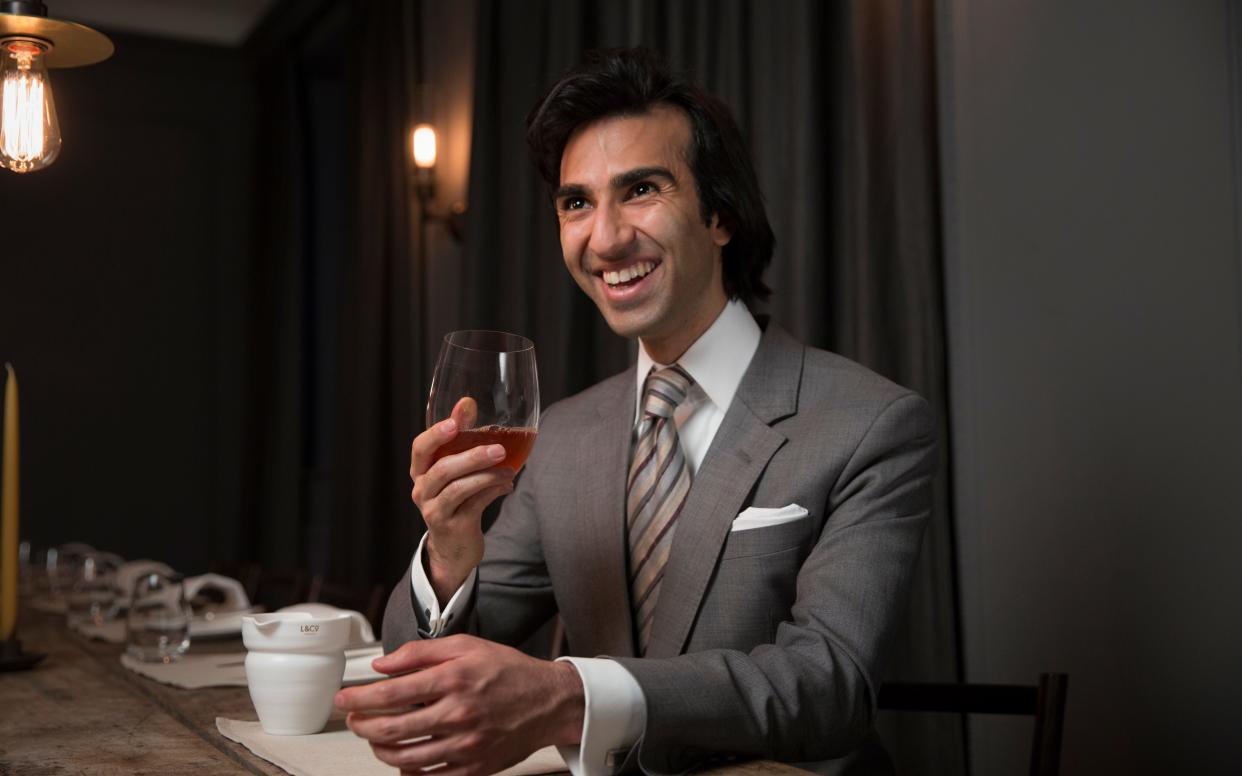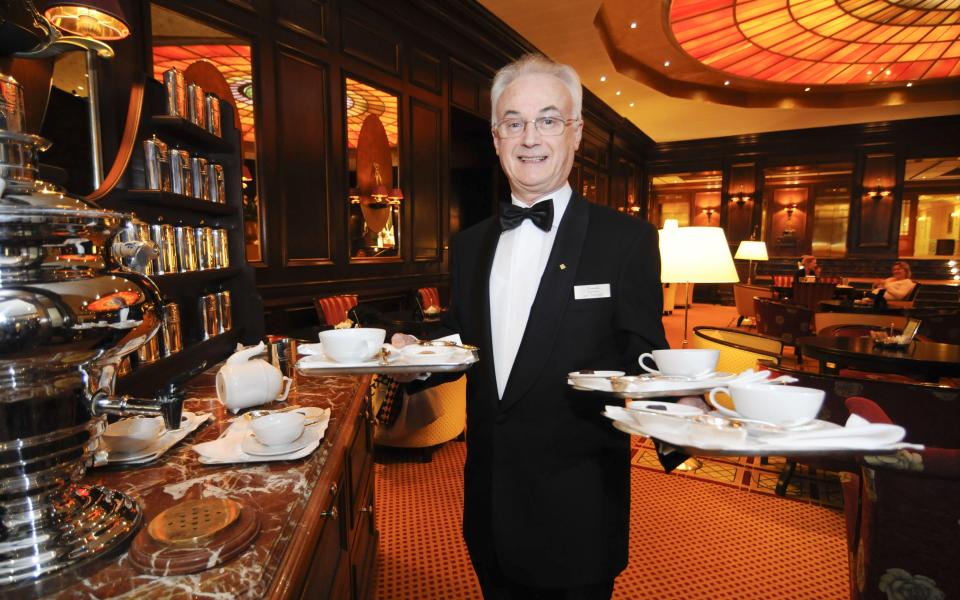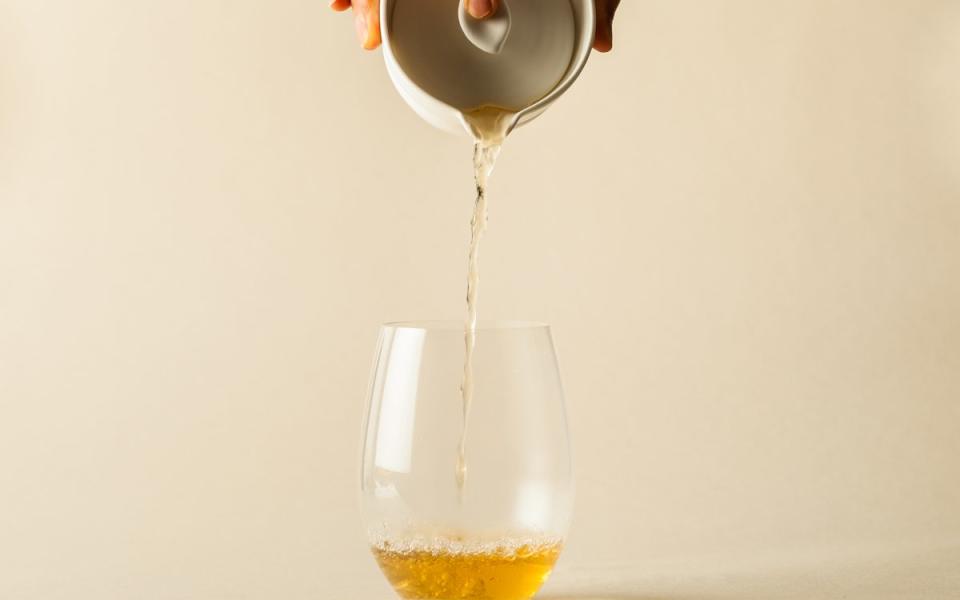'I'll have a cuppa with my main': how tea became the new wine in restaurants

Last month, insurance firm Lloyds of London announced that employees are no longer allowed to drink alcohol during office hours. The move, which offered the twin benefits of potentially raising productivity while lowering the strain on company credit cards, brought Lloyds into line with other City firms such as Hiscox and QBE. A sober move – but in the aftermath, as everyone raised a glass to the passing of the lunchtime pint, no one stopped to ask: what about the poor restaurants?
Without those reliable lunchtime drinkers to help ring up the tills, restaurants in the City have been forced to reconsider their menus. Now, it seems that a new wave of drinks are accompanying food in some of the UK's swankiest joints. Tea is the order of the day.
Michelin starred restaurants such as Club Gascon and Fera at Claridge now serve tea with savoury food, and both employ a tea sommelier to advise customers on the most appropriate food and tea pairings. And the practice is not reserved for haute cuisine: Jikoni in Marylebone offers tea suggestions alongside each of its brunch dishes, as does Kaffeine, a small cafe on Titchfield Street.
So is tea the new wine?

It's certainly seems that the time is ripe for alternatives. Years of government messaging about the negative health impact of alcohol consumption (it is the leading cause of death for 18- to 49-year olds) has seen consumers, particularly millennials, turn away from the grape in search of alternative libations. Government statistics revealed last year that teenage drinking habits are at an all-time low; the latest Mintel research shows that alcohol and wine sales have decreased in recent years, with the decline predicted to continue.
At the same time, sugary fruit juice has taken a hit in our esteem, which means that non-alcoholic cocktails no longer appear the healthy option on the restaurant menu. The health conscious diner is left with few options – and no one really wants to ask for a glass of (tap) water.
Jamil Lanani, founder of the Lalani tea company, has worked with a variety of restaurants to offer bespoke tea pairing menus and training, including Gauthier in Soho and Tom Kerridge's The Hand And Flowers. He sees the increase in tea drinking in restaurants as a result of an overall trend towards lighter, healthier dining. "When you go towards the more floral, brighter, vegetal-based flavours that are in fashion right now in dining, those flavours are really well suited to pairing with a lighter drink, like tea. And this caters for peoples' need for a healthier diet on the whole."
It also responds to a change in clientele, particularly international visitors who may be teetotal or choose not to drink in public. As Lalani notes, "restaurateurs need to offer a really good craft drink that isn't alcohol, otherwise they are not providing the gastronomic experience for the guest, or gaining the drink sale for the restaurant. "
Henrietta Lovell, founder of the Rare Tea Company, has worked with Michelin-starred restaurants across the world for over ten years, pairing iced teas with pork buns in Momofuku in New York, and creating bespoke menus for Noma in Copenhagan and Claridges. She argues that tea is an equal, if not superior choice than wine for food pairing, as tea offers a far greater spectrum of flavour. "All the subtleties of wine production, which results in bottles costing thousands of pounds, apply to tea," she insists. Lalani corroborates this: "with tea, you have a huge palette to paint with. There's barely a dish on earth that you couldn't pair with a particular tea."
Tea can be seen as a comparable drink to wine in terms of quality because of its heritage. The concept of terroir is by no means restricted to the wine industry, with a myriad of factors coming in to play to determine the taste of the final product.
"It starts from the soil the plant grows in," Lalani explains, "the regional climate, the elevation of the land, the variety of the plant and the seasonal weather conditions. Then of course the local culture has an impact on flavour, too, and every place has a different method of harvesting and processing the tea. This includes the time of day the leaves are picked, the age of the leaves, how long they are rolled for and the temperature at which they are dried. It's very complex, and the difference in taste is noticeable."
As with wine and coffee, a hand-harvested, single origin tea will have a far more subtle and complex flavour than an industrial blend. "The difference between a beautifully crafted leaf tea and a generic teabag is the same as between an fast food hamburger and a fillet of beef" Lovell notes.

If opting for tea seems like a cheap drinking option, in comparison to spending upwards of £100 on a bottle of wine, it was not always so. "Tea used to be the most expensive part of a meal," Lovell explains. "It was extremely valuable, and people would always buy the best they could afford; choosing it as people now choose a fine wine, cheese or olive oil. Government rationing during World War Two and the influence of supermarkets changed this, resulting in the mass-drinking of low quality, industrial black tea."
According to Lovell, it was only when Waitrose started to reengage with loose leaf teas seven years ago that consumer habits began to shift, with more people beginning to take an interest in high quality tea. Sales are booming, and the explosion of craft coffee is contributing.
But drinking tea with food? While it may be fully integrated into Japanese and Chinese cuisine, in the UK, we tend to associate tea with breakfast and as a pick-me-up beverage. If eaten with anything at all, it is usually something sweet. Drinking tea with a steak and kidney pie or vol-au-vent seems alien, if not downright unpleasant. But this was not always the case. According to Lovell, we are actually going full circle: "Tea has been drunk with food for thousands of years: it's actually a modern habit to pair food with wine and soft drinks".
Drinking tea with meals was a standard practice for middle class British families throughout the 18th, 19th and early 20th centuries: whether alongside a Sunday roast or in a workplace canteen. That is why the evening meal, eaten upon return from work, was known as "tea".
At a restaurant level, pairing teas with food is a highly nuanced process: teabags, milk and boiling water from the kettle are definitely personae non gratae. Loose leaf is a must, as it offers greater complexity of flavour, and each tea needs to be served at a specific temperature: in general, black teas do well above 90 degrees as this helps to bring out richer flavours, whereas the fruity and floral notes of lighter teas do best between 70 and 80. "The temperature at which it is served always depends on the tea and the dish itself. " Lalani insists.
So how do you know what to serve with what? "The first thing you do is match up the weight of the tea to the dish, in terms of the flavour intensity. " Lalani explains. "You don't want to pair a very intense dish with a very light tea, or visa versa.
"The next step is to decide whether you want a match pairing or a contrast pairing. In a match you might choose a Japanese green tea and pair it with a seafood dish, or truffle risotto. This is because the premium Japanese green teas have a very distinctive umami character, which is best paired with other umami flavours. The results are spectacular.
"If you do a contrast, you might pair something savoury with something sweet; a first flush Darjeeling, for example, works very well with light, vegetal flavours such as a salad, because the fruit, floral notes in the Darjeeling will be exaggerated by contrast."
30 best places for afternoon tea
Different teas should be served with each course. Some restaurants are now opting to include tea pairings alongside wine ones in their tasting menus, as customers are moving away from a traditional wine flight in order to better enjoy their food, and to guarantee being able to walk out of the restaurant in a straight line. This mix and match technique can be hugely beneficial for hard to pair foods such as asparagus, which, according to Lalani is "notoriously difficult for wine, but dead easy for tea: a Taiwanese oolong with asparagus is a match made in heaven. "
Both Lewell and Lalani insist that the traditional absence of tea menus is not due to lack of customer interest: restaurants say that they don't sell much tea (coffee is traditionally more popular), but as soon as they offer a wider variety of quality produce, sales start increasing. As Lovell comments, "if you only sold Nescafé, you wouldn't sell much coffee, either". Now 80pc of customers at Noma choose to drink tea as part of their meal, and lunchtime is the biggest area of growth. Thomas Rabuel, manager of Club Gascon, told The Times that, since bringing in tea pairings three months ago, tea sales have increased by 400pc.
Lalani is confident about the future of the fashion: "these trends take off when what we're doing doesn't respond to people's needs any more: right now, people need lighter, more veg-centered cuisine and moderated alcohol consumption. Tea is the ideal solution because it has all the terroir, history and complexity of a craft drink, and allows people to enjoy their eating experience as much as they would with a glass of fine wine."

 Yahoo News
Yahoo News 
